
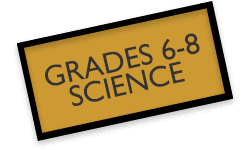

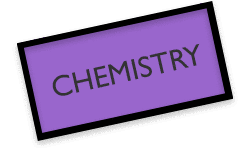
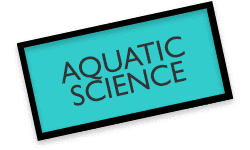
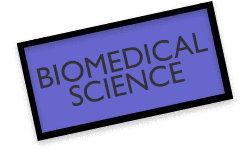
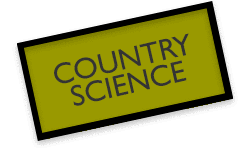




Welcome to Biology! Bio introduces grade 9 students to the study of life and is required for graduation. [close]
About Bio: Learning Tools | Course Description & Competencies | School Supply List
The 2024-2025 Syllabus will tell you what you need to know to be successful.
Our Assignment Board is where you can find our calendar of learning events.
We will be using Google Classroom as our Learning Management System (LMS). It will help us to organize our lesson details and e-materials.[top]
Course Description & Competencies
Course Description
BIOLOGY
Credit: 1.0 GHS Credit
Grade level: 9-12
Prerequisite: none
Length: one year
Biology is an inquiry-based course designed to cover the basic concepts of general biology leading to the understanding of the change, homeostasis, organization, continuity, development, and ecology in living systems. This will be accomplished using a active, guided inquiry approach. Introductory principles covered in this course will include biodiversity, natural selection, adaptation, homeostasis, organism structure and function, cycling of matter and energy, gene action, development, and ecology. Laboratory and general activities that combine conceptual understanding with problem solving are integrated into this course.
Course Competencies
Upon successful completion of this course, students will be able to satisfy the following Wisconsin Standards for Science Disciplinary Core Ideas. (NOTE: Engineering, Technology, and the Application of Science DCI will also be covered, but are not listed in detail.)
- Standard SCI.LS1: Students use science and engineering practices, crosscutting concepts, and an understanding of structures and processes (on a scale from molecules to organisms) to make sense of phenomena and solve problems.
- SCI.LS1.A.h, Structure and Function
Systems of specialized cells within organisms help perform essential functions of life. Any one system in an organism is made up of numerous parts. Feedback mechanisms maintain an organism’s internal conditions within certain limits and mediate behaviors.
- SCI.LS1.B.h, Growth and Development of Organisms
Growth and division of cells in organisms occurs by mitosis and differentiation for specific cell types.- SCI.LS1.C.h, Organization for Matter and Energy Flow in Organisms
The molecules produced through photosynthesis are used to make amino acids and other molecules that can be assembled into proteins or DNA. Through cellular respiration, matter and energy flow through different organizational levels of an organism as elements are recombined to form different products and transfer energy.- SCI.LS1.D.h, Information Processing
Organisms can process and store a variety of information through specific chemicals and interconnected networks.
- Standard SCI.LS2: Students use science and engineering practices, crosscutting concepts, and an understanding of the interactions, energy, and dynamics within ecosystems to make sense of phenomena and solve problems.
- SCI.LS2.A.h, Interdependent Relationships in Ecosystems
Ecosystems have carrying capacities resulting from biotic and abiotic factors. The fundamental tension between resource availability and organism populations affects the abundance of species in any given ecosystem. The combination of the factors that affect an organism's success can be measured as a multidimensional niche.- SCI.LS2.B.h, Cycles of Matter and Energy Transfer in Ecosystems
Photosynthesis and cellular respiration provide most of the energy for life processes. Only a fraction of matter consumed at the lower level of a food web is transferred up, resulting in fewer organisms at higher levels. At each link in an ecosystem, elements are combined in different ways, and matter and energy are conserved. Photosynthesis and cellular respiration are key components of the global carbon cycle.- SCI.LS2.C.h, Ecosystem Dynamics, Functioning, and Resilience
If a biological or physical disturbance to an ecosystem occurs, including one induced by human activity, the ecosystem may return to its more or less original state or become a very different ecosystem depending on the complex set of interactions within the ecosystem.- SCI.LS2.D.h: Social Interactions and Group Behavior
Group behavior has evolved because membership can increase the chances of survival for individuals and their genetic relatives.
- Standard SCI.LS3: Students use science and engineering practices, crosscutting concepts, and an understanding of heredity to make sense of phenomena and solve problems.
- SCI.LS3.A.h, Inheritance of Traits
DNA carries instructions for forming species’ characteristics. Each cell in an organism has the same genetic content, but genes expressed by cells can differ.- SCI.LS3.B.h, Variation of Traits
The variation and distribution of traits in a population depend on genetic and environmental factors. Genetic variation can result from mutations caused by environmental factors or errors in DNA replication, or from chromosomes swapping sections during meiosis.- Standard SCI.LS4: Students use science and engineering practices, crosscutting concepts, and an understanding of biological evolution to make sense of phenomena and solve problems.
- SCI.LS4.A.h, Evidence of Common Ancestry and Diversity
The ongoing branching that produces multiple lines of descent can be inferred by comparing DNA sequences, amino acid sequences, and anatomical and embryological evidence of different organisms.- SCI.LS4.B.h, Natural Selection
Natural selection occurs only if there is variation in the genes and traits between organisms in a population. Traits that positively affect survival can become more common in a population.- SCI.LS4.C.h, Adaptation
Evolution results primarily from genetic variation of individuals in a species, competition for resources, and proliferation of organisms better able to survive and reproduce. Adaptation means that the distribution of traits in a population, as well as species expansion, emergence, or extinction, can change when conditions change.- SCI.LS4.D.h, Biodiversity and Humans
Biodiversity is increased by formation of new species and reduced by extinction. Humans depend on biodiversity but also have adverse impacts on it. Sustaining biodiversity is essential to supporting life on Earth.[top]
- Provided by Student:
- two college ruled composition-style notebooks
- pencils
- Full Classroom Set Provided by Teacher:
- markers
- colored pencils
- scissors
- glue
- Partial Classroom Set Provided by Teacher:
- scientific calculator, similar to TI-30Xa
[top]
GO PIRATES!
Gilman Middle/High School
325 N Fifth Ave
Gilman, WI 54433